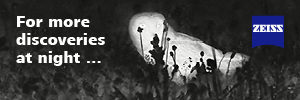Alternative names: German's Swiftlet; Oustalet's Swiftlet
- Aerodramus germani
Identification
Length 12cm - a medium-sized swiftlet.
- upperparts glossy black-brown
- rump white (germani) or grey (amechanus)
- underparts distinctively paler
- tail deeply forked
- tarsi lightly feathered to naked
Similar Species
Very similar to Edible-nest Swiftlet, Black-nest Swiftlet, Mossy-nest Swiftlet and other swiftlets in its range
Distribution
Found in South-east Asia. Along the coastline from Hainan (China) south over Vietnam, Cambodia, Thailand to the Malay Peninsula. Also on N Borneo and the S Philippines (mainly Palawan).
Common in parts of its range but population declining due over harvesting of nests.
Taxonomy
Like other Aerodramus swiftlets this species is often placed in Collocalia.
Often considered conspecific with Edible-nest Swiftlet: reference [2] notes genetic divergence from that taxon is minimal.
Subspecies
Clements recognises the following subspecies [1]:
- A. g. germani: Coasts of the Malay Peninsula, north Borneo and south Philippines
- A. g. amechanus: Anambas Islands
Habitat
Recorded over a wide variety of habitats, forests, clearings, coast, lowlands and mountains.
Behaviour
Diet
Feeds on insects, taken in flight. Gregarious and often foraging in big flocks together with other swiftlets and swallows.
Breeding
Breeding season differs through range, but mainly from September to April. Nests in caves in big colonies, often together with Mossy-nest Swiftlet, Glossy Swiftlet and Black-nest Swiftlet. Also frequently recorded breeding in villages and towns. The nest is made purely out of saliva and looks whitish. Capable of echolocation. Lays two eggs. The nests are collected in some caves for the famous Chinese Swallow nest soup.
Movements
Resident.
References
- Clements, J. F., T. S. Schulenberg, M. J. Iliff, T. A. Fredericks, J. A. Gerbracht, D. Lepage, S. M. Billerman, B. L. Sullivan, and C. L. Wood. 2022. The eBird/Clements checklist of Birds of the World: v2022. Downloaded from https://www.birds.cornell.edu/clementschecklist/download/
- Eaton, JA, B van Balen, NW Brickle, FE Rheindt 2021. Birds of the Indonesian Archipelago (Greater Sundas and Wallacea), Second Edition. Lynx Editions. ISBN978-84-16728-44-2
Recommended Citation
- BirdForum Opus contributors. (2024) Germain's Swiftlet. In: BirdForum, the forum for wild birds and birding. Retrieved 27 July 2024 from https://www.birdforum.net/opus/Germain%27s_Swiftlet





